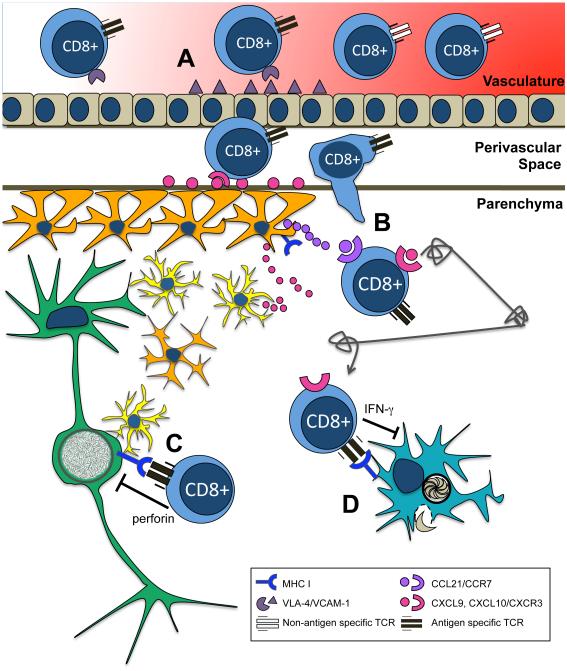Figure 1.
A) VLA-4 and VCAM-1 interactions are required for recruitment of CD8+ T cells to brain. Whether interaction between CXCR3 and its ligands governs entry into the parenchyma during chronic toxoplasmosis has not been established, but has been observed in West Nile Virus. Astrocytes and microglia appear to be sources of CXCL9 and CXCL10 during chronic toxoplasmosis. B) Upon entry into the brain CXCR3 ligands help increase the velocity of Levy walks. Interaction between CCR7 and ligands may also govern migration within the parenchyma. For example, CCL21 is expressed on fibrous networks that appear in the brain parenchyma at the chronic stage of infection. C) Antigen recognition with the tissue may also govern long term survival/entry. Microglia, astrocytes, and neurons all express MHC I, but CD8+ T cells have been observed to contact infiltrating DCs during Toxoplasma gondii infection. A percentage of DCs may present antigen through cross presentation, or may be directly infected D) CD8+ T cells contribute to control of reactivation through the actions of IFN-gamma, and control of cyst burden through perforin mediated cell lysis.

